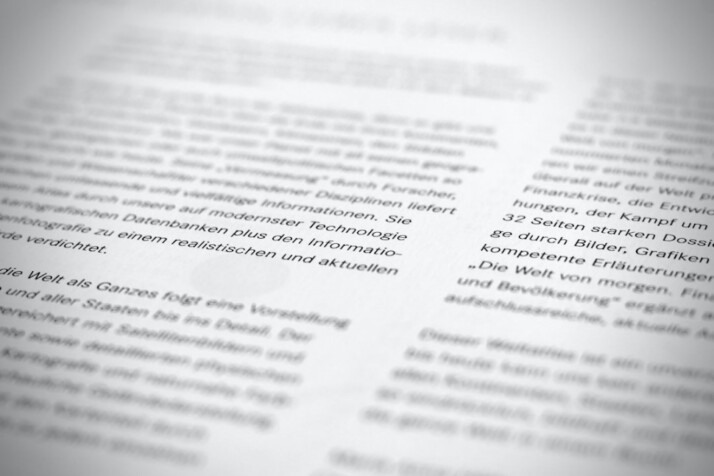Researchers and students need to know how to paraphrase a paragraph. Without paraphrasing, they stand the risk of getting penalized for plagiarism.

This article shows you how to paraphrase a paragraph and the tools to help you with it.
What Is Paraphrasing?
Before going deeper, it is important to understand the basics of paraphrasing. Paraphrasing means writing or saying what has been said differently. Paraphrasing is an important communication technique, especially in academic research.
It is a simple way to avoid copying an original source. In research, you should not use other people’s ideas without crediting the author and citing the source. Thus, presenting what has already been said in your own words is a good way of delivering your message.
Paraphrasing may involve a simple stretch of text, like one or two sentences. In other instances, you may need to paraphrase an entire paragraph. Whatever the needs are, knowing how to paraphrase a paragraph is a useful skill.
Difference Between Paraphrasing, Quoting, and Summarizing
These are the three triplets of academic writing that leave students confused. The three are explained below.
When you use a quotation, you write another person’s work verbatim. Quotations are enclosed between quotation marks. You’re expected to include a citation of the source of the quote.
Summarizing is all about distilling long texts into their fundamental points. For this reason, summaries are typically shorter. On the other hand, paraphrasing is all about putting what has already been said in your own words.
How to Paraphrase a Paragraph
When paraphrasing any stretch of text, always remember that you’re not doing it to introduce your idea. Instead, it is a way of saying the same thing differently. Here are the simple steps to follow to paraphrase texts:
1. Understand the Passage
You cannot give what you don’t have. Thus, you’ll find it hard to paraphrase a passage or content you do not understand. Read the passage several times to identify the key points and circumstantial information. You should check the dictionary for the meaning of unfamiliar words in the text.
2. Change the Words
The next step is to change the words in the text by finding suitable alternatives. The change doesn’t have to be wholesale. You might want to opt for simpler synonyms when changing the words, especially if you want to enhance clarity. When using this strategy, it is important to ensure the synonym fits the context. For example:
- Yesterday, I witnessed one of the most amazing events of my entire life. It was breathtaking.
- Yesterday, I saw one of the most astounding scenes in my whole life. It was stunning.
3. Play With the Syntax
Syntax refers to the arrangement of words and phrases in a sentence. When you play around with the sentence’s syntax, you can easily paraphrase entire essays. For example:
- He worked as a clerk at the post office for seven years
- For seven years, he worked at the post office as a clerk
- They cooked a sumptuous meal as we tried a new style
- While we tried a new style, they cooked a sumptuous meal
Each pair of examples have similar words. However, they are syntactically different. Most importantly, the meaning stays the same in both sentences. Another simple way of changing sentence syntax is to change active voice sentences to passive and vice-versa.
4. Change Word Forms
There are instances where you can rephrase sentences by changing the parts of speech of constituent words. This process could involve changing an adjective to an adverb. The success of this option is dependent on how the original text is worded.
Overall, writers need to understand that the best strategy is to combine the steps mentioned above. Opting for a single one could limit the way you express yourself.
Best AI Tools for Paraphrasing Paragraphs
The steps listed above are quite a lot. You can bank on AI writing tools to paraphrase texts for you. They are faster, and the output is always unique.
INK
You can bank on INK’s AI reword tool to help you paraphrase any text anytime and anywhere. Users can access the tool via three channels:
- INK website
- Chrome extension
- Desktop editor
INK uses a proprietary AI to rewrite sentences for users with excellent output. Users can also select their desired tone. This possibility ensures that your paper or article fits the prescribed tone.
QuillBot
When you need a quality AI tool to paraphrase and alter the structure of your text, there aren’t many tools better than QuillBot. QuillBot uses an AI-powered thesaurus to identify the correct synonym for words according to context.
Wordtune
Users get rewrite suggestions to diversify their content. Hence, Word Tune is a quality tool for rewriting and paraphrasing. It offers different tones and the option to lengthen or shorten your sentence.
Conclusion
Many students have difficulty paraphrasing or reviewing their work. There are tools to help out. These tools are more than just some online translation aid.
They’re smart enough to suggest changes to your sentences for a better paraphrase. Some of these changes could be at the very sentence level, and others could be at the paragraph level. Both are great and can make a huge difference.
The main aim of paraphrasing is to present another person’s idea in your own words. Paraphrased sentences usually mean almost the same thing as the original text.
Explore All AI Paragraph Rephrase Articles
Use Advanced AI to Rewrite Articles Instantly
When you need an article rewrite service, you subconsciously think of a long, arduous task. This is true for individuals and…
Key Guide to Better Paraphrase Paragraphs
Researchers and students need to know how to paraphrase a paragraph. Without paraphrasing, they stand the risk of getting penalized for…
